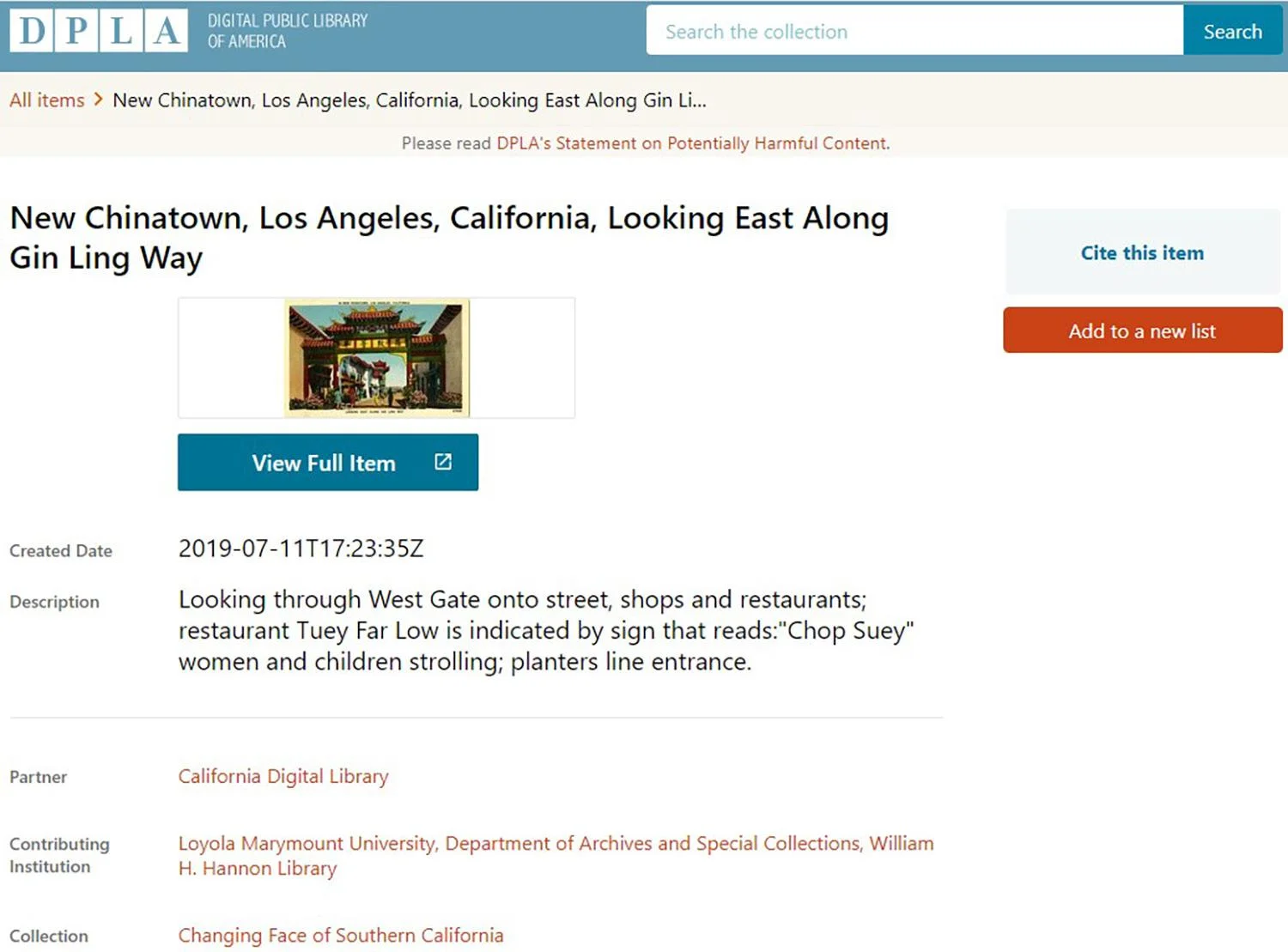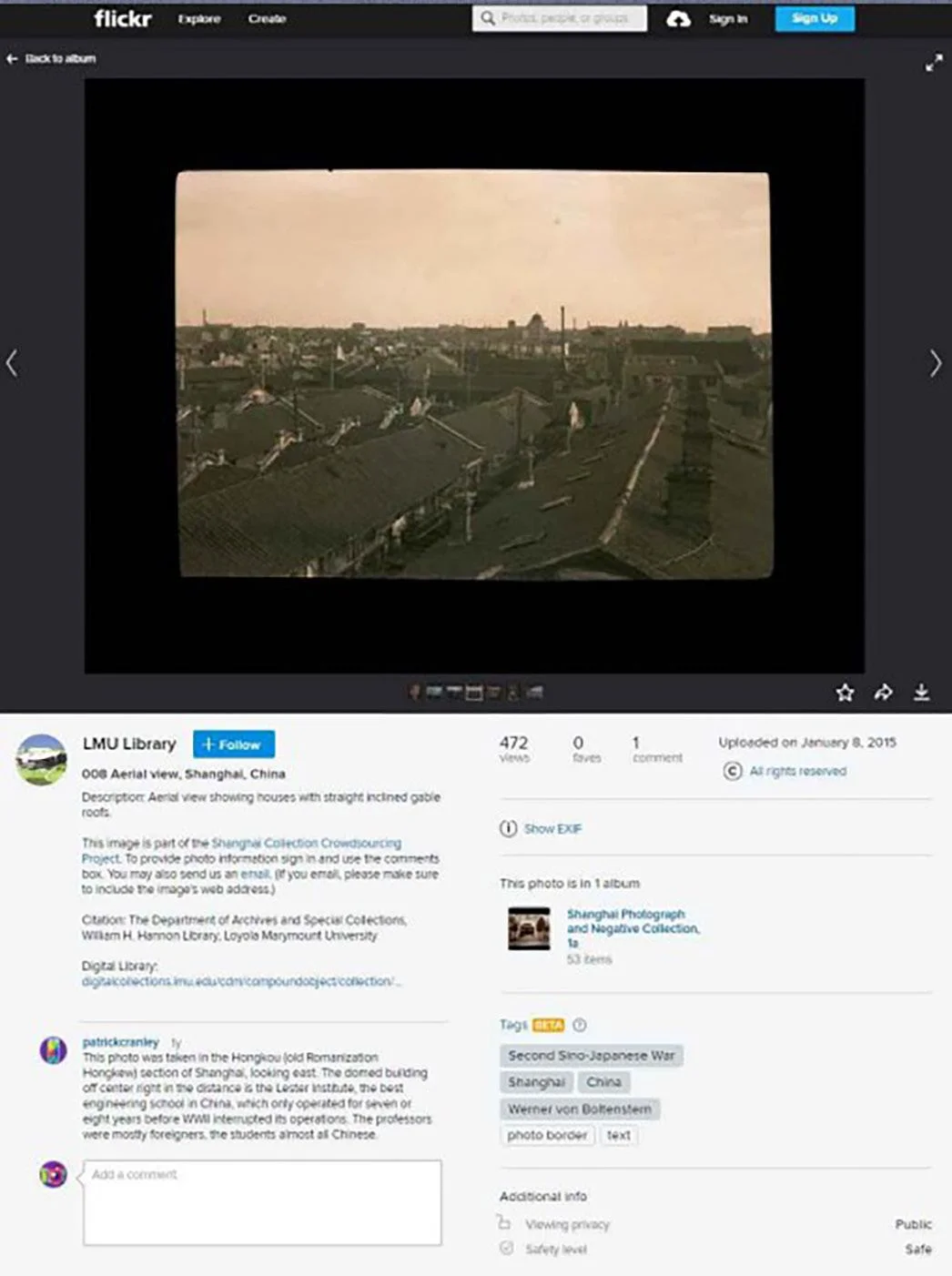Leveraging Innovative Collaboration to Empower Digital Special Collections
By Neel Agrawal, Digital Projects Librarian, William H. Hannon Library at Loyola Marymount University.
The Loyola Marymount University (LMU) William H. Hannon Library has cultivated an array of digital collections over the past 15 years.
LMU was an early adopter of AM Quartex in 2019. LMU hosts a wide spectrum of digital collections on Quartex, including photographs, postcards, correspondence, manuscripts, art, maps, and local newspapers.
Principles of diversity, equity, inclusion, and anti-racism (DEIA) are central to LMU’s digital collections, administered by the Department of Archives and Special Collections.
The digital collections feature unique sources highlighting the histories of under-engaged communities locally and worldwide. Here, the focus is on the essential role of innovative collaboration in building and stewarding LMU’s digital collections that promote a more inclusive and equitable historical narrative. Hopefully this insight into LMU’s collaborations will inspire new and exciting collaborations for overcoming challenges relating to discoverability, description, and curation of digital collections.
LMU engages in several collaborative initiatives to foster the use of its distinctive digital collections. This article briefly examines the impact of innovative collaboration in relation to three digital collections that broaden the historical perspective: the Changing Face of Southern California, capturing the region’s evolving cultural landscape; the Werner von Boltenstern Shanghai Photograph and Negative Collection, highlighting a Jewish refugee community in China; and the Venegas Family Papers, shedding light on the lives of a Mexican refugee family in Los Angeles.

Image 1: DPLA record of “New Chinatown, Los Angeles, California, Along Gin Ling Way” (circa 1940), linking to the postcard in LMU’s Changing Face of Southern California Digital Collection.
For digital projects, thoughtful collaboration can empower a range of activity relating to content curation, digitisation, description and metadata creation, long-term file preservation, as well as access and discoverability to primary source material.1
The Digital Public Library of America (DPLA), a metadata aggregator, presents a collaborative model for enhancing access to digital collections through federated discovery:2
The success of the metadata aggregator Digital Public Library of America (DPLA) depends on close collaboration between libraries, hubs, and the DPLA to harvest and submit metadata in ways that are as inoperable as possible given the disparate milieus in which it was created.
Smaller institutions, like LMU, were unable to directly share their collections with the DPLA. As a solution, LMU partnered with Calisphere in order to on-ramp to the DPLA. As a DPLA Service Hub, the California Digital Library shares metadata records contributed to Calisphere with DPLA.
The results of LMU’s partnership with Calisphere 3 and DPLA4 were impressive. In one year (from June 2015 to May 2016), the number of hits across 15 collections rose from less than 8,000 per month to over 170,000 per month, representing a greater than 2000% increase.5
Notably, there was a major usage increase in the Changing Face of Southern California collection. This postcard collection captures the evolving cultural landscape of the region in the first half of the twentieth century. Included are depictions of some of LA’s most prominent cultural landmarks, including Chinatown and Olvera Street. Through interinstitutional collaboration, LMU significantly expanded the usage of this distinctive digital collection.
Through another innovative collaboration, LMU enhanced the description of one of its most popular collections among researchers around the globe.
The Werner von Boltenstern Shanghai Photograph and Negative Collection contains nearly 600 items and was carefully digitised from cellulose negatives, gelatin dry plate negatives, and black and white photographs. The collection captures everyday life in Shanghai, China in the war-torn years from 1937 through 1949, through its photographs of bustling streets, shops, schoolchildren, family portraits, and opera and theatrical performances.6 One of the most significant aspects of this collection is the photographic documentation of the Jewish community of Shanghai, consisting mostly of Jewish refugees fleeing the Holocaust. These images tell a powerful story of this Jewish refugee community through the portrayal of local businesses, cultural life, living quarters, and government documents.7
According to former LMU librarian Melanie Hubbard, who oversaw the digitisation of the materials, the physical objects were associated with minimal metadata. The collection’s negative and print sleeves contained simple descriptions like “woman cooking” and “school children,” and rarely identified specific individuals, communities, or locations.
LMU librarian Rachel Wen-Paloutzian created metadata by conducting research, consulting with faculty, and closely examining the images. Upon launching the collection website, the library sought additional metadata through a crowdsourcing project.8
The library reached out to the wider research community, for example, through H-Net, to seek their expertise in describing material in this collection9 and posted the collection on Flickr for readers to leave messages and provide information.10 Based on LMU’s collaborative approach, this crowdsourcing initiative helped to enrich the description of the content, significantly enhancing this unique research collection.

Image 2: Through posting images on Flickr, a contributor helped describe this item containing an aerial view of houses in the Hongkew (Hongkou) District of Shanghai, China.
Venegas Family Papers, containing more than 150 items, mostly comprises letters between a family of refugees who settled in Los Angeles and their family that remained in Mexico. This collection extensively documents the history of Dolores (1900-1991) and Miguel Venegas (1897-1994) and their family. Originally from Zapotlanejo, Jalisco, Mexico, Dolores and Miguel immigrated to Los Angeles in 1927 as refugees from the Cristero Rebellion. The correspondence between family members sheds light on their immigration experience:11
Miguel and Dolores describe life for a Mexican immigrant family in Los Angeles, including conditions of work for the Mexican immigrant community, political freedoms in Los Angeles versus those in Mexico, the effects of the Depression, means of success for a Mexican immigrant in Los Angeles, and secular versus Roman Catholic education for their children in Los Angeles.
During the pandemic, The Venegas Family Papers digital collection empowered a virtual collaborative exhibit involving the library, a faculty member, and students. The student-curated digital exhibit, Entre Dos Mundos: Strength and Resilience in the Venegas Family, told the transnational stories of the Venegas Family. The three-part digital exhibit series was created entirely in the virtual space by LMU students in “Rhetorical Arts: Writing and Speaking for Social Justice” courses taught by professor Laura Poladian in fall of 2020, in collaboration with library staff.
Despite the dispersed locations of the students, the opportunity to interact with the digital material was a formative educational experience:
Students approached the new digital exhibit task with flexibility and imagination. In doing so, one class inhabited two worlds themselves — the digital and the physical, their particular places in the world and the transnational journey of the Venegas family. Through first-hand encounters and research with personal artifacts in the Venegas Family Papers, students spent the semester exploring the Venegas family’s immigration experiences and finding strength and resilience in the family’s interconnection across borders and time.12
In this case, remote collaboration helped bring these research materials to life through a student-curated exhibit.

Image 3: The Entre Dos Mundos digital exhibit highlights this letter from a child in Los Angeles to his Uncle in Mexico, discussing school life, working for his family business, and finances.
These examples illuminate the critical role of collaboration in empowering distinctive digital collections that aim to tell a more inclusive and equitable history. LMU’s innovative collaborations helped to enhance the discoverability of its diverse collections, enrich the metadata of its unique content, and tell underrepresented stories through the curation of its collections. By offering insight into LMU’s collaborative ethos, we hope to inspire a wide spectrum of innovative collaborations to help overcome a plethora of challenges faced by digital collections.
About the author
Neel Agrawal (JD, MLIS) is the Digital Projects Librarian at the Loyola Marymount University William H. Hannon Library, where he manages a diverse array of digital collections. Previously, he managed LA Law Library’s extensive collection of foreign and international law, launched the South Asia Open Archives, and was an inaugural fellow at the Harvard Library Innovation Lab. Neel also worked at the National ACLU and held internships at the Soros Foundations, South Asia Human Rights Documentation Centre, and the United Nations Dag Hammarskjöld Library.
Endnotes
1. For a discussion of collaborative approaches to digital preservation, see, Huwe, Terence K., “Preserving Special Collections: An Exercise in Collaboration” (2018). See also, Silva, Ana van Meegan, “One Repository Solution Doesn’t Fit All, Towards a distributed and collaborative approach to digital preservation services at the Amsterdam City Archives”, 16th International Conference on Digital Preservation. Link
2. Connelly, Erin, Donlon, Anne, Latsis, Dimitrios and Schmitz, Dawn (2017), New Opportunities for Collaboration in the Age of Digital Special Collections. In: Maclachlan, John C. and Eyre, Jodi Reeves and Williford, Christa, (eds.), A Splendid Torch: Learning and Teaching in Today’s Academic Libraries. Council on Library and Information Resources. 108.
3. LMU’s digital collections are discoverable through Calisphere. Link
4. LMU’s digital collections are discoverable through DPLA. Link
5. Rele, Shilpa (2016), Finding an Onramp to the DPLA: Loyola Marymount University’s Collaboration with Calisphere. LMU Librarian Publications & Presentations. 31. Link
6. Hubbard, Melanie (2020). The Importance of being Discovered: The Werner Von Boltenstern Shanghai Photograph and Negative Collection. Judaica Librarianship 21 (2020): 30-7. ProQuest. Web. 29 May 2023. Link
7. Id.
8. Id.
9. Imhoff, Sarah (August 18, 2015), Call for Crowdsourcing: Shanghai Jewish community photographs at William H. Hannon Library at Loyola Marymount University. Link
10. Henriot, Christian (March 24, 2015, upd. December 5, 2015), Werner von Boltenstern Shanghai Photograph and Negative Collection, Blog Virtual Shanghai.
11. Online Archive of California. Link
12. Jackson, John (April 7, 2021), Entre Dos Mundos: A Digital Exhibit in Collaboration with Rhetorical Arts Students (Venegas Family Papers), LMU Library News. Link
This article was first published in Against the Grain, September 2023.
Recent posts

AM’s new resource, A Global History of Epidemics, 1800-1970, offers interdisciplinary researchers unique primary sources, interactive tools from maps to timelines, and expert essays, to explore disease history, colonialism, and public health advancements within the British Empire and beyond.

